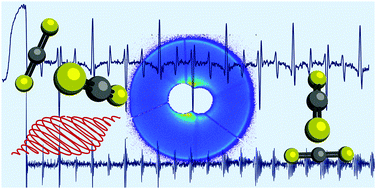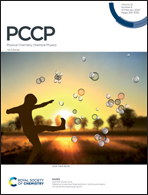Laser-induced alignment dynamics of gas phase CS2 dimers
Abstract
Rotational dynamics of gas phase carbon disulfide (CS2) dimers were induced by a moderately intense, circularly polarized alignment laser pulse and measured as a function of time by Coulomb explosion imaging with an intense fs probe pulse. For the alignment pulse, two different temporal intensity profiles were used: a truncated pulse with a 150 ps turn-on and a 8 ps turn-off, or a ‘kick’ pulse with a duration of 1.3 ps. For both types of pulse, rich rotational dynamics with characteristic full and fractional revivals were recorded, showing that the intermolecular carbon–carbon axis periodically aligns along the propagation direction of the laser pulses. The truncated pulse gave the strongest alignment, which we rationalize as being due to a flat relative phase between the components in the rotational wave packet generated. Fourier analysis of the alignment dynamics gave well-spaced peaks which were fit to determine the rotational constant, B, and the centrifugal constant, DJ, for the ground state of the dimer. Our results agree with values from high-resolution IR spectroscopy. Numerical simulations of the alignment accurately reproduced the experimental dynamics when the truncated pulse or a low intensity kick pulse was used, but failed to reproduce the dynamics induced by a high intensity kick pulse. We posit that the discrepancy is due to excitation of the intermolecular torsional motion by the kick pulse.

- This article is part of the themed collections: 2020 PCCP HOT Articles and PCCP Editor’s Choice, 2020


 Please wait while we load your content...
Please wait while we load your content...